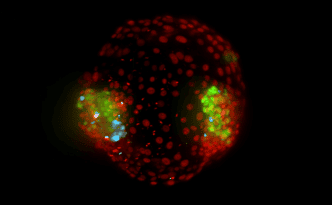
A team of researchers at the University of Cambridge has developed an innovative biohybrid neural implant to restore limb functionality for amputees and paralysis victims. This device combines flexible electronics with human stem cells to enhance nerve integration and limb function. The approach prevents scar tissue formation, a significant obstacle in previous neural implant functionality, by using reprogrammed muscle cells from stem cells. Although not yet ready for human use, the device holds immense promise for those who have lost limb function.
Overcoming limitations of previous neural implants
Neural implants have previously faced challenges in restoring limb function due to scar tissue formation around the electrodes over time, which impedes the connection between the device and the nerve. The University of Cambridge researchers solved this problem by sandwiching a layer of muscle cells reprogrammed from stem cells between the electrodes and the living tissue. This enabled the device to integrate with the host’s body without forming scar tissue, as the body recognizes the cells rather than the electrodes.
The stem cells used in the device are induced pluripotent stem cells, which offer an extraordinary degree of control and can be monitored throughout the experiment. This is the first time these cells have been used in a living organism in this manner, and they survived throughout the 28-day experiment, a first in monitoring such cells over an extended period.
Combining cell therapy and bioelectronics
The biohybrid device’s design combines two advanced therapies for nerve regeneration—cell therapy and bioelectronics—into a single device, overcoming the shortcomings of both approaches and enhancing functionality and sensitivity. By incorporating living stem cells reprogrammed into muscle cells with bioelectronic materials, the researchers have created a system that can communicate with the brain in a more natural and intuitive way, opening up new possibilities for prosthetics, brain-machine interfaces, and even cognitive enhancement source.
One of the primary challenges in restoring limb function is the inability of neurons to regenerate and rebuild disrupted neural circuits. The biohybrid device addresses this issue by attaching a biocompatible, flexible electronic device to the end of a nerve, with a layer of stem cells placed on the electrode. This setup increases the sensitivity of the implant and allows for better resolution and long-term monitoring within a living organism.
Potential applications and future developments
While the device has not yet been tested in humans, its successful application in rats demonstrates its potential for the restoration of function in amputees or paralysis victims. The biohybrid device integrated with the nerves in rats’ paralyzed forearms and was able to pick up signals from the brain that control movement. If connected to the rest of the nerve or a prosthetic limb, the device could potentially help restore movement.
Additionally, the device’s compact size would only require keyhole surgery for implantation, and its scalability offers a significant advantage over other neural interfacing technologies. The researchers believe their device could also be used to control prosthetic limbs by interacting with specific axons responsible for motor control.
Commercialisation and further optimisation
The research team has filed a patent application for the biohybrid device, and Cambridge Enterprise is supporting the technology’s commercialisation. The researchers are currently working to improve the device’s scalability and optimise its functionality.
The technology utilises opti-oxTM-enabled muscle cells, a precision cellular reprogramming technology that allows for consistent, large-scale manufacturing of cells. The opti-ox-enabled muscle iPSC cell lines used in the experiment were supplied by the Kotter lab from the University of Cambridge, and the opti-ox reprogramming technology is owned by synthetic biology company bit.bio. The research received support from the Engineering and Physical Sciences Research Council (EPSRC), part of UK Research and Innovation (UKRI), Wellcome, and the European Union’s Horizon 2020 Research and Innovation Programme.








